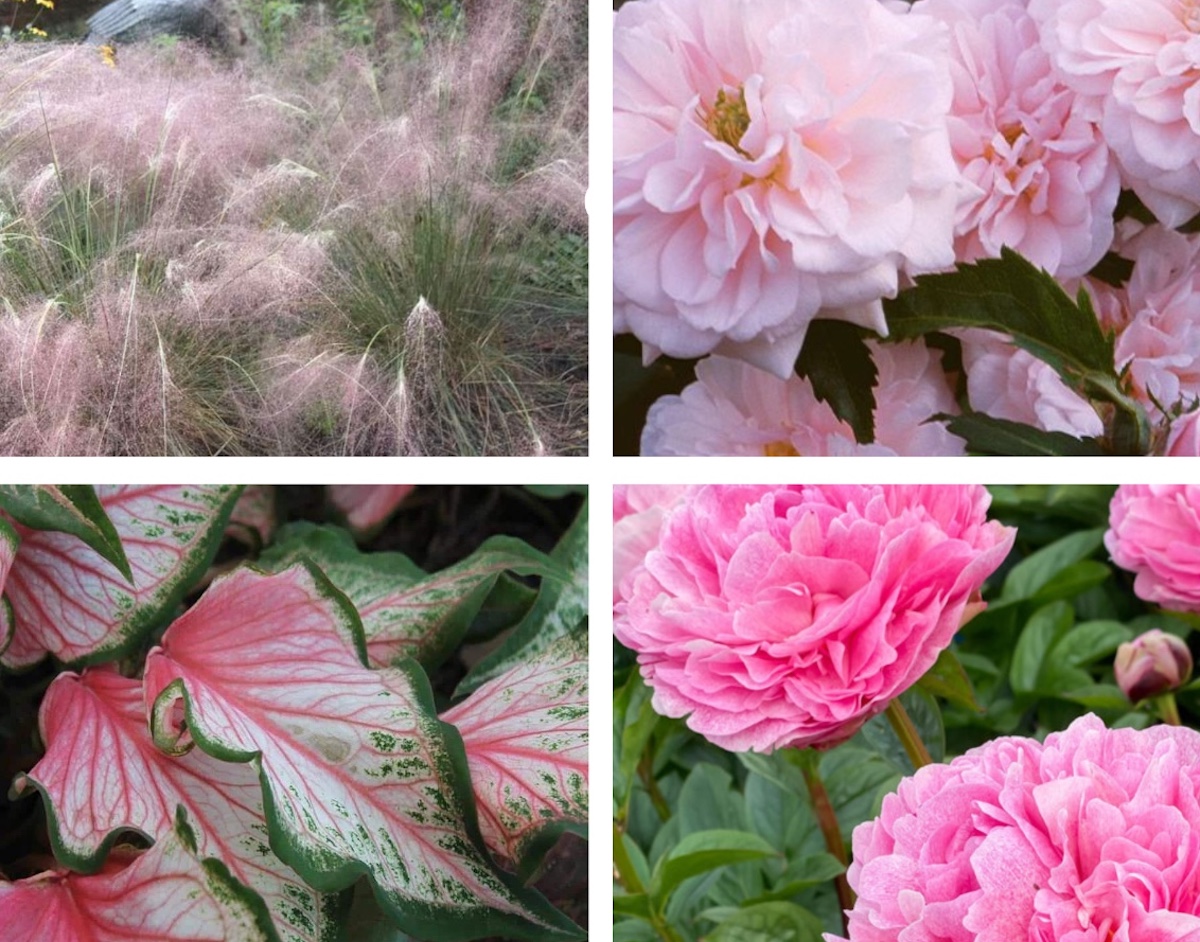

We may earn revenue from the products available on this page and participate in affiliate programs. Learn More ›
When it comes to gardening, sometimes mixing and matching a rainbow of colors in a single bed can create a busy, unfocused look. With monochromatic gardening, you can choose plants with showy flowers (and sometimes foliage) of a single, similar color and group them together in one garden bed, container, or specific area of the landscape. The results can be quite stunning, and can make a garden look more orderly and restful to the eye. Whether you’re going for a blush-and-bashful pink bed or a dark-as-night goth garden, here are some suggestions that are sure to inspire you.
1. Red

The beauty of monochromatic gardening is that within a single color scheme, you can embrace variation in shades of color and play off of textures and heights. Red is one of the classic garden colors for this kind of variation, and there’s no shortage of flowering plants that belong in this category. Some of our favorites are:
- Cardinal Flower, Lobelia cardinalis: Indigenous to North America, cardinal flower’s dozens of cultivars over the years have enhanced the brilliance of its red bloom. An easy-to-grow plant that thrives in full sun to part shade in zones 4 to 9, its burgundy leaves are graced with vibrant 1- to 2-foot spikes of red flowers that can be seen from a block away. Try the Black Truffle with ultradark leaves, available at Nature Hills.
- Red Poppy, Papaver rhoeas: Popular as a cut flower, this is the bright red poppy straight out of a painting. It grows well in full sun in zones 3 to 9 with blooms throughout the spring and summer and often self-sows for the following year. The flowers don’t last very long but the plant can produce flowers regularly throughout the growing season. Deer tolerant, poppies attract pollinators and require little maintenance once established. Find the seeds on Amazon.
- Red Common Geranium, Pelargonium x hortorum: The classic geranium can’t be beat for low-maintenance color and long-lasting, bright red blooms. An annual in most climates, the geranium can be overwintered outdoors in zones 9 to 12. Gardeners in other climate zones can have success bringing the plant indoors in the winter and caring for them as houseplants in a sunny windowsill. Outdoors, they prefer part shade to part sun, but might need extra shade on their first trip outdoors. Easy to find at most outlets, you can get geraniums at The Home Depot.
- Azalea, Rhododendron spp.: The smaller cousin to rhododendrons, azaleas come in an array of colors and are famous for producing bright blooms early in the spring, especially in shady parts of the garden. Successful as perennials in zones 4 to 9, stand-out hybrids include Autumn Fire, Hino Crimson, and Double Scarlet. Find Hino Crimson and other azaleas at Nature Hills Nursery.
2. Blue
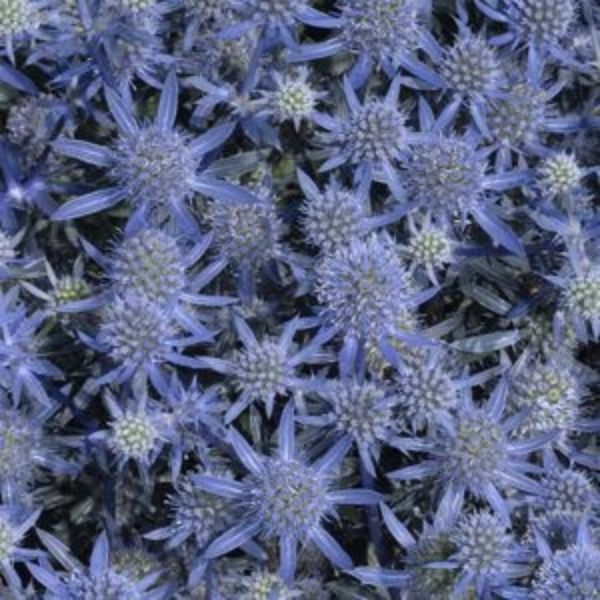
Nature produces an array of beautiful blue flowers, always a striking contrast against green leaves. Blue flower beds can look particularly nice next to white flowers, or even yellow blooms.
- Blue Star Sea Holly, Eryngium alpinum ‘Blue Star’: Drought-tolerant, Sea Holly presents a unique flower that lasts forever as a cut flower. Perennial in zones 2 to 9, it prefers full sun to produce the most flowers. They attract pollinators, so plant them en masse to get a gorgeous blue hue anywhere in your garden. Nature Hills Nursery carries a variety called Blue Glitter.
- Sky Blue Larkspur, Delphinium cultorum: Delphinium flowers are one of those old-fashioned blossoms that have been popular in garden beds for a reason. They’re known for their deep blue flowers that also can be a bright sky blue. Flower spikes can get over 3 or 4 feet high, often requiring staking. Grow as a perennial in zones 3 to 8 in a sunny location. Look for Cobalt Dreams at The Home Depot.
- Nikko Blue Hydrangea, Hydrangea macrophylla ‘Nikko Blue‘: Hydrangeas come in many forms but the show-stopping Nikko Blue is a gardener’s favorite. While most blue hydrangeas require an aluminum sulfate supplement to help retain the blue color, Nikko Blue is reliably blue in nearly any soil type. For zones 5 to 9, plant this shrub in sun to partial shade. Get the plant at Burpee.
- Bluebeard, Caryopteris: Bright blue flowers and sage-like leaves fill this shrub that grows 2 to 3 feet high and as wide. The aromatic foliage attracts people and bees love the blue blossoms. The plant is drought tolerant once established, and although butterflies and bees love the plant, deer tend to leave it alone. Plant it in full sun in zones 5 through 9. Proven Winners has a variety called Beyond Midnight.
- Blue Wonder Catmint, Nepeta racemosa ‘Blue Wonder’: A perennial in zones 3 to 9, catmint establishes easily, even in rocky soils, and has a tendency to clump and stay compact. Blue Wonder grows about 1 foot tall and wide with an abundance of showy, blue-violet flowers against grayish leaves. Its long-lasting flowers will be around from spring to fall. Plant in full sun to maximize bloom potential. Available at The Tree Center Plant Supply Co.
3. Black
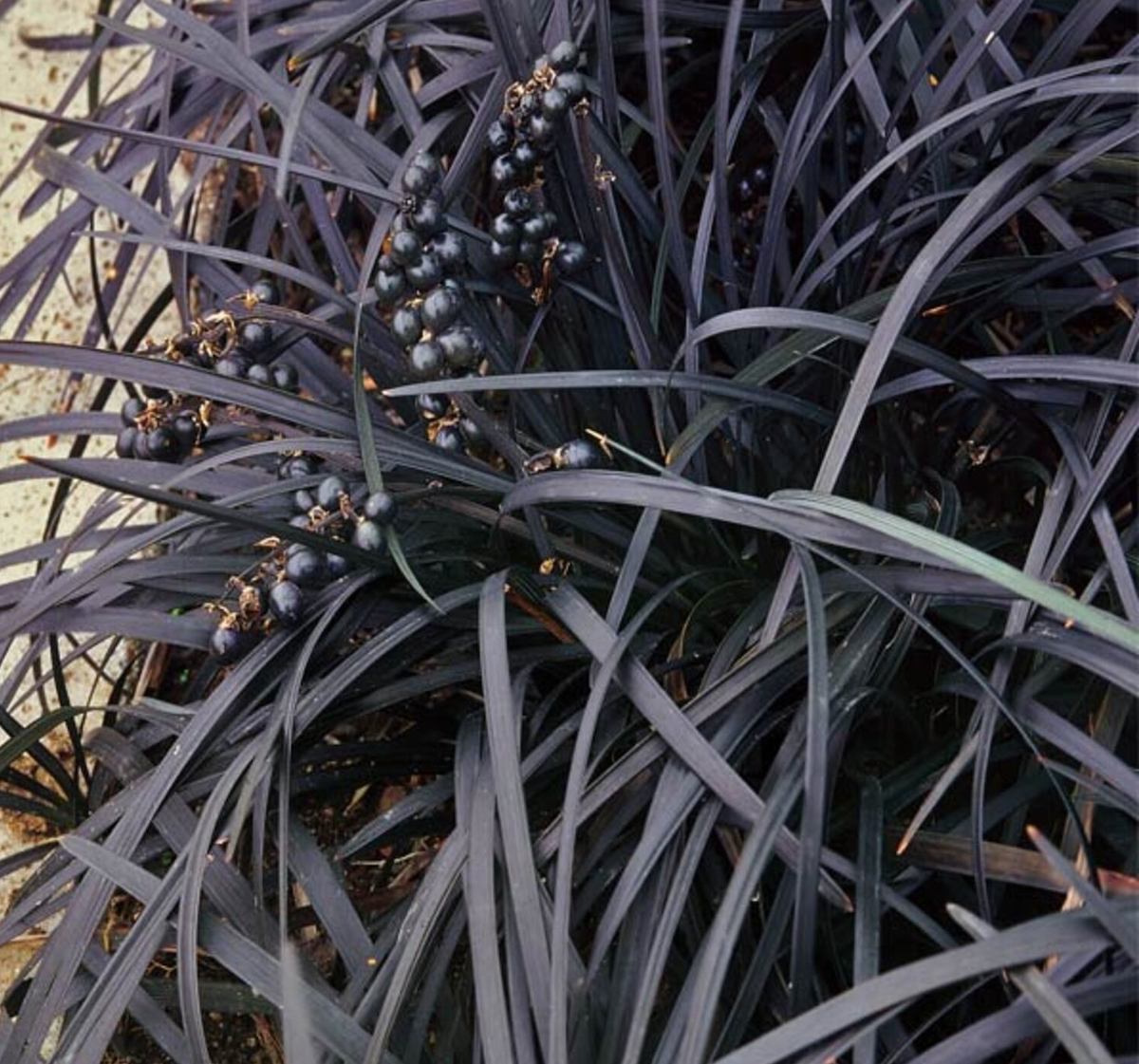
When it comes to garden colors, black may not be the first color that comes to mind but gardening with deep, dark hues can look particularly striking when grouped together near brilliant blues.
- Black Mondo Grass, Ophiopogon planiscapus ‘Nigrescens’ : A slow-growing plant in the liriope family, black mondo grass tends to mound and stay low, making it an excellent and striking plant for borders and ground cover. Hardy in USDA zones 5 to 10, it does best when planted in full to partial sun. Find it at Bluestone Perennials.
- Baby Black Eyes, Nemophila menziesii ‘Penny Black’: This showy hybrid of a California native stays compact in mounds of 10 to 15 inches with several months of bloom time from spring through summer. It grows in zones 3 to 9 as a self-sowing annual that may prove to be perennial in milder climates. Give it full to partial sun. Find the seeds at Eden Brothers.
- Persian Lily, Fritillaria persica: Plant Fritillaria persica in the fall for unique blooms the following spring in zones 4 to 10. This beauty produces 2- to 3-foot tall spikes covered in deep purple-nearly-black bells that thrive in full sun to partial shade. As an added bonus, they are deer resistant. Find Persian Lily at Bluestone Perennials.
- Black Friday Bearded Iris, Iris germanica: While there are several deep black iris varieties, including Raven Girl, Black Is Black, and Hello Darkness, the relatively new hybrid Black Friday makes a statement in any garden. Plant in fall for spring blooms in zones 3 to 9. Iris germanica prefers full sun with a minimum of 6 hours of full sunlight to thrive. Find it at High Country Gardens.
- New York Night Lenten Rose, Helleborus orientalis ‘New York Night’: There are now several varieties of hellebore in unusual inky shades. New York Night produces a beautiful flower in early spring in zones 5 to 9. Hellebores can tolerate some shade and prefer partial sun to full shade. They are prized for being both deer and rabbit resistant. Get this hellebore at Spring Hill Nurseries.
4. White
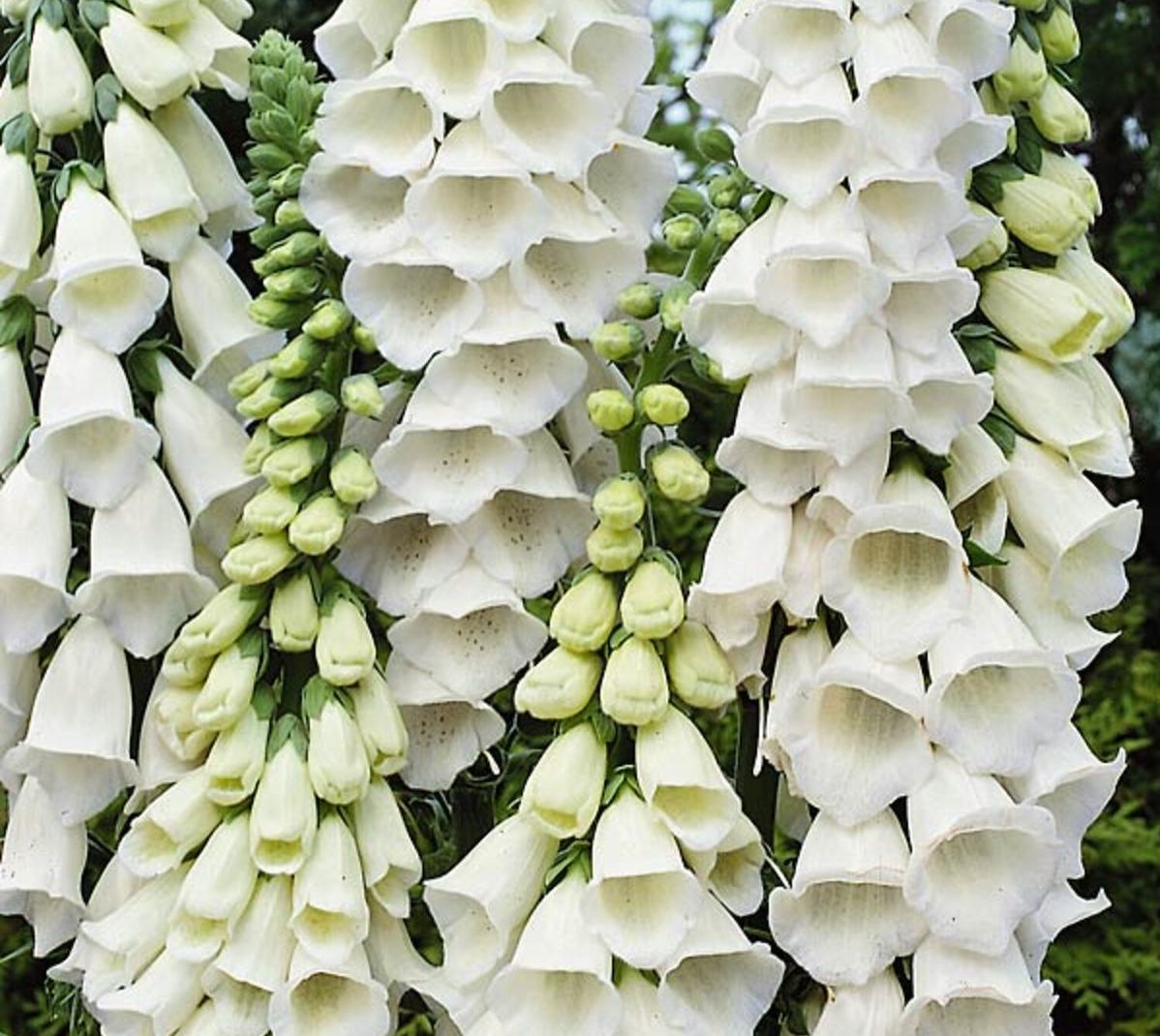
A favorite in monochromatic gardening, white flowers are frequently included in moon garden scapes—a collection of plants with light-colored flowers and leaves that reflect moonlight.
- Sweet Alyssum, Lobularia maritima: An inexpensive annual that produces hundreds of tiny white flowers as it cascades from hanging baskets, window boxes, and planters, alyssum is an excellent fill-in annual ground cover or container filler. It grows rapidly and has a mild sweet smell. In many climates, gardeners can sew it successfully from seed directly in the ground or a container. Suitable for zones 2 to 9, alyssum enjoys full sun. Get the seeds at Burpee.
-
White Giant Allium, Allium stipitatum ‘White Giant’: This impressive flower grows from 3 to 4 feet tall with large white globular flowers that can be as wide as 8 inches. Because the plant is in the onion family, it tends to ward off pests but attract pollinators. Plant allium bulbs in fall for early spring color. They can take full sun to partial shade and are perennial in zones 4 to 9. Find the plant at White Flower Farms.
- White Foxglove, Digitalis purpurea ‘Alba’: A striking white flowering version of the beloved foxglove, this foxglove thrives in full sun to partial shade in zones 5 to 8. Foxgloves are biennials—they die off after 2 years—but during their life cycle they leave plenty of seeds behind, so they should repopulate in your garden bed. Over time, it will feel as if you have a perennial plant in its place. Find white foxglove at Bluestone Perennials.
- White Goat’s Beard, False Spirea, Astilbe: This white flowering astilbe brings brightness to a shady garden, especially when planted in quantity. A perennial in zones 3 to 9, it can be planted in spots ranging from sun to partial shade and boasts long-lasting blooms. Astilbe also attracts pollinators. Buy it at Great Garden Plants.
5. Orange
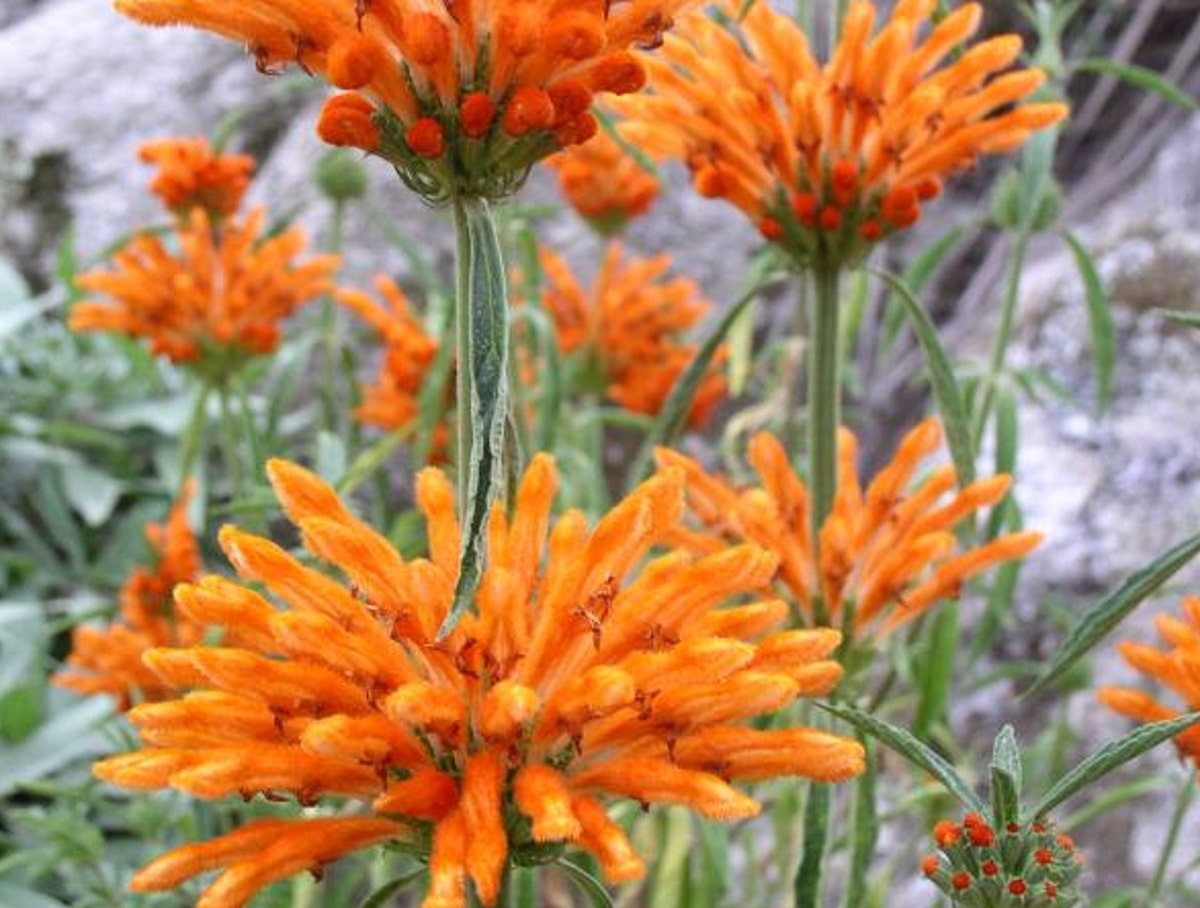
Anyone who’s ever seen a field of California poppies will agree that the use of this color in large quantities can create quite a focal point. Deep green leaves and hedges can help showcase this celebratory color in your garden beds.
- Lion’s Tail or Lion’s Ear, Leonotis leonurus: Bright orange blooms stacked along sturdy deep green stems feature on this showy and rapidly growing plant—it can reach 4 to 6 feet in its first year. Although perennial only in zones 8 to 11, this drought-tolerant plant still is enjoyable as an annual in cooler zones. Give it full sun to get the most blooms. Hummingbirds and butterflies love it. Get the seeds on Etsy.
- Marigold, Tagetes patula: Marigolds are among those foolproof flowers anyone can grow, bringing cheery color to pots and garden beds with little effort. Go for the classic orange marigold for a hardy annual that can help ward off common garden pests. Plant in borders and look for varieties like Sunrise and Tiger Eyes for a range of deep orange to bright orange colors. An annual in all climates, marigold prefers full to part sun—shield the plants from the hot afternoon sun. Get the seeds at Guerney’s.
- Tiger Lily, Lilium lancifolium: Plant tiger lily bulbs in the fall for an early to late spring show of orange flowers with black spots. Most tiger lilies grow 3 to 5 feet tall and can display several flowers on one stalk. They like full sun but also can produce blooms in partially sunny conditions. There are dozens of hybrids out there, and nearly all thrive in zones 3 to 8 as a perennial. Find tiger lilies at Lowe’s.
- California Poppy, Eschscholzia: From May to September, you can spot hillsides covered in this bright orange native plant. There are dozens of hybrids that come in pink, cream, and red but the simple orange flower is a proven winner in many gardens. Sew the seeds directly in the ground in March or April for summer and fall flowers. A hardy annual in most climates, the poppy reseeds itself in California and other Southwest states, giving the impression that it is perennial. Plant in full sun. Get seeds from High Country Gardens.
6. Purple

There may well be more purple flowering plants than nearly any other color, but don’t forget about purple foliage. Using plants like heuchera along with green-stemmed, purple flowering plants ensures you get that purple impression all season long.
-
Purple Coral Bells, Heuchera micrantha: Coral bells, commonly called heuchera, come in a variety of shades but the purple-leaved cultivars are consistently strong plants in a range of climate zones. Look for the classic Palace Purple or Ruby Tuesday for deep purple or Berry Smoothie for a lighter purple shade. Typically they grow to be about 12 to 18 inches wide and about as tall with white or bright pink flower spikes. Grow as a perennial in zones 4 to 9 (and above) in full to partial shade. It’s easy to find in most nurseries and at The Home Depot.
- Blazing Star, Gayfeather, Liatris spicata: The upright flower stalks of the dense blazing star can bring height to a garden bed; some varieties can grow as tall as 5 feet. Dwarf varieties will grow closer to 1 to 2 feet high. They make excellent cut flowers but also provide long-lasting color in the garden. A native plant to North America, gayfeather attracts pollinators, including native bees. Most prefer sun to partial sun and thrive as perennials in zones 3 to 9. Get the bulbs at Lowe’s.
- Grandpa Ott Morning Glory, Ipomoea purpurea: While Heavenly Blue is one of the most popular shades of morning glory, the bright purple of Grandpa Ott can’t be beat. This vining annual grows fast with heart-shaped leaves and a profusion of purple flowers that open to the morning sun. They’re easy to grow from seed and like full sun in any climate. Note that in some states ipomoea are considered invasive, so check local sources. Get the seeds from Burpee.
- Purple Fountain Grass, Pennisetum setaceum ‘Rubrum’: A showy grass with deep purple blades and soft arching flowers in pinkish purple, this fountain grass can grow as a perennial in zones 8 to 11 only, but is widely used as an annual in other climates. Drought tolerant once established, it also looks great in containers. Give it full sun. Find the plants at Nature Hills Nursery.
- Lavender, Lavandula: No purple flower list is complete without the namesake lavender plant. There are more than 40 species of this flowering plant, prized for its beautiful scented flowers and leaves. A perennial in zones 5 to 9, lavenders like full sun. While some varieties might make it through a winter in zone 4 or lower, lavender is generally treated like an annual in colder climates. Discover new varieties from Burpee.
7. Yellow
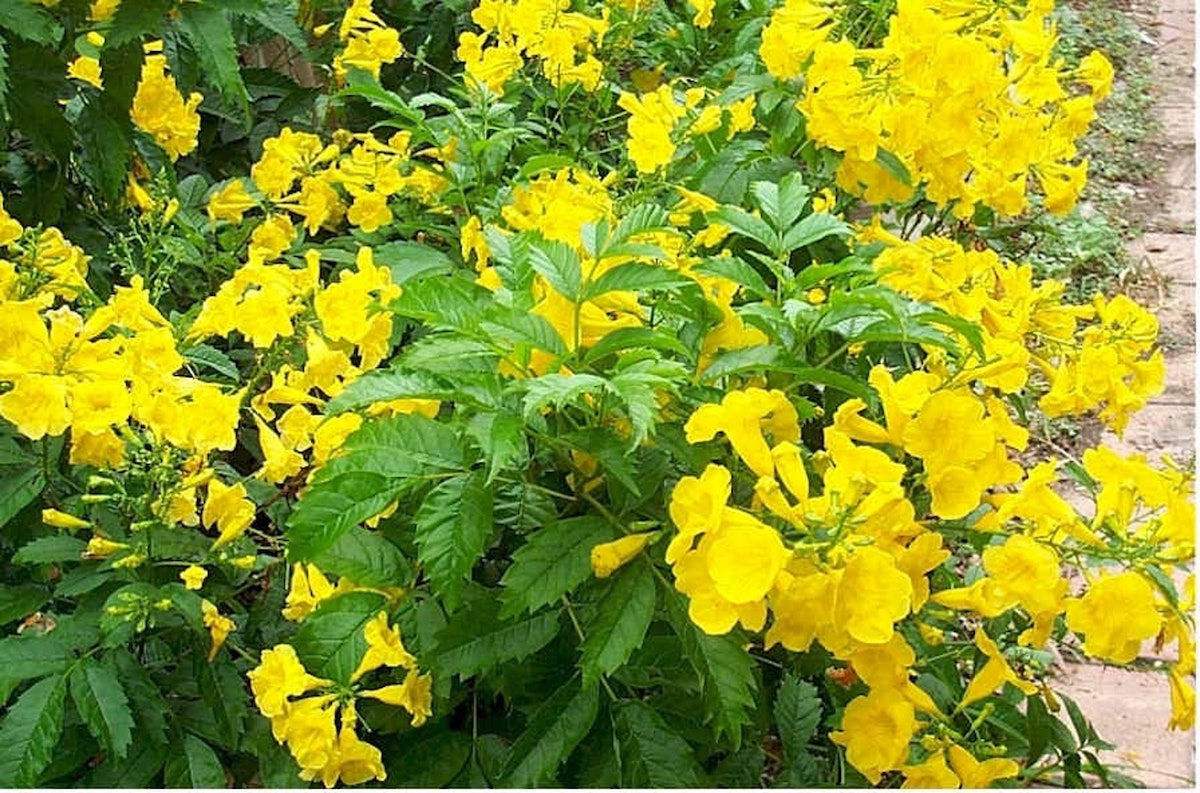
Yellow is already a standout color in the garden, so grouping yellow plants together can be very eye-catching. Some plants, like yarrow, will bloom from May to October.
- Yarrow, Achillea millefolium: Although there are many cultivars from native yarrow that produce pink, red, and even multicolored blooms, the profusion of mustard-yellow flowers on silvery leaves makes an attractive addition to the yellow monochromatic scheme. Look for Coronation Gold, which can grow 3 feet wide and tall and is covered in flower heads. Bees and other pollinators love this plant, which grows successfully as a perennial in zones 3 to 8 and in full sun. Find Coronation Gold at Bluestone Perennials.
- Daffodils, Narcissus spp.: The bright yellow of daffodils is unmistakable on this bulb that is among the first to flower in the spring. The bright bulbs are easy to grow in a variety of conditions in zones 4 to 8. Plant them in the fall, and coat them with turkey grit (a rough, pea-sized gravel mix) to prevent squirrels and other critters from eating them. Daffodils grow in full sun to partial shade. Get the bulbs at Bluestone Perennials.
- Forsythia, Forsythia spp.: Forsythia is usually the first shrub to bloom in the spring with a profusion of bright yellow flowers. Forsythia grows quickly, sometimes as much as 2 feet per year, and many reach a mature height of 8 to 10 feet. They require at least 6 full hours of sunlight to thrive in zones 4 to 8. Find forsythia at Nature Hills Nursery.
- Yellow Bells, Tecoma stans: Native throughout Florida and the Southwestern United States and Mexico, this low-maintenance, vigorous growing perennial shrub is hardy in zones 9 to 11. Grow it as a showy annual in other zones. It’s a heavy bloomer from spring to the first frost and can grow up to 10 to 25 feet tall and nearly as wide. Plant in full to partial sun. Get the plant on Etsy.
8. Green
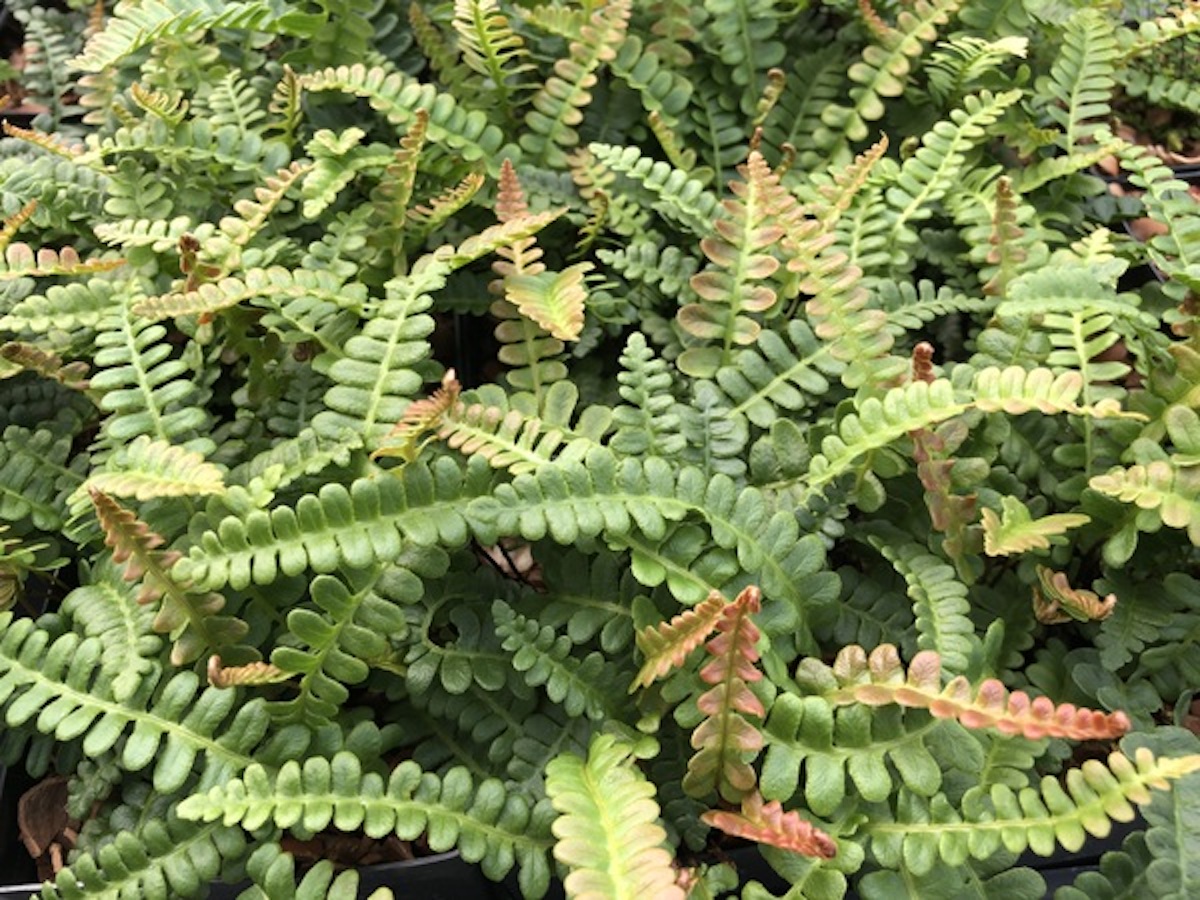
Green is more prevalent in the garden than any other color, so for monochromatic gardens, using green can be a strategic move. Green plants make a great backdrop for lighter colors like silver, white, and yellow. But green also can serve as a powerful anchor in a monochromatic garden. Playing around with flowering plants in a green hue can change the way you view the color in your landscape.
- Sweet William Green Ball, Dianthus barbatus: This relative of the carnation produces a Horton-Hears-a-Who-like globular flower in a green only a shade or two lighter than its leaves. An annual that lasts particularly long in zones 8 and 9, it looks fantastic when planted with trailing white flowers or in a green-themed bed of its own. Give it full sun to partial shade. The plant can be hard to find, but seeds are available at Select Seeds.
- Green Jewel Coneflower, Echinacea purpurea ‘Green Jewel’: Lime green flowers stand tall and prolific in full sun to partial shade on this cultivar of the popular native purple coneflower. And it’s just as hardy. Coneflower can grow in zones 3 to 8, reseeds itself, and will even rebloom without deadheading. Find it at Nature Hills Nursery.
- Alpine Water Fern, Austroblechnum-marina: A densely growing groundcover fern, Alpine can successfully establish in zones 7 to 10. Although a lush emerald green in color, it produces surprisingly bright red to copper colored new growth, adding early spring variety to your monochromatic beds. Give the plant shade. Find this fern at Far Reaches Farm.
- Fox Sedge, Carex: Fox sedge is a beautifully mounding 2-feet wide and high grass with a sturdy appearance and a bright, light green color. It can tolerate a variety of conditions and as a wetland sedge can handle more water than other grasses. The green leaves are offset by bronze seed heads in the summer. Hardy from zones 3 to 8, it likes full to partial sun. This variety at Great Garden Plants can even handle shady conditions.
- Bells of Ireland, Moluccella laevis: Favorites as long-lasting cut flowers, these truly green annual plants produce spikes of emerald green flowers on green stalks. They can grow 2 to 3 feet tall and about a foot wide in full to partial sun. Bells of Ireland can be perennial in zones 9 to 11. Find the seeds at Burpee.
9. Pink
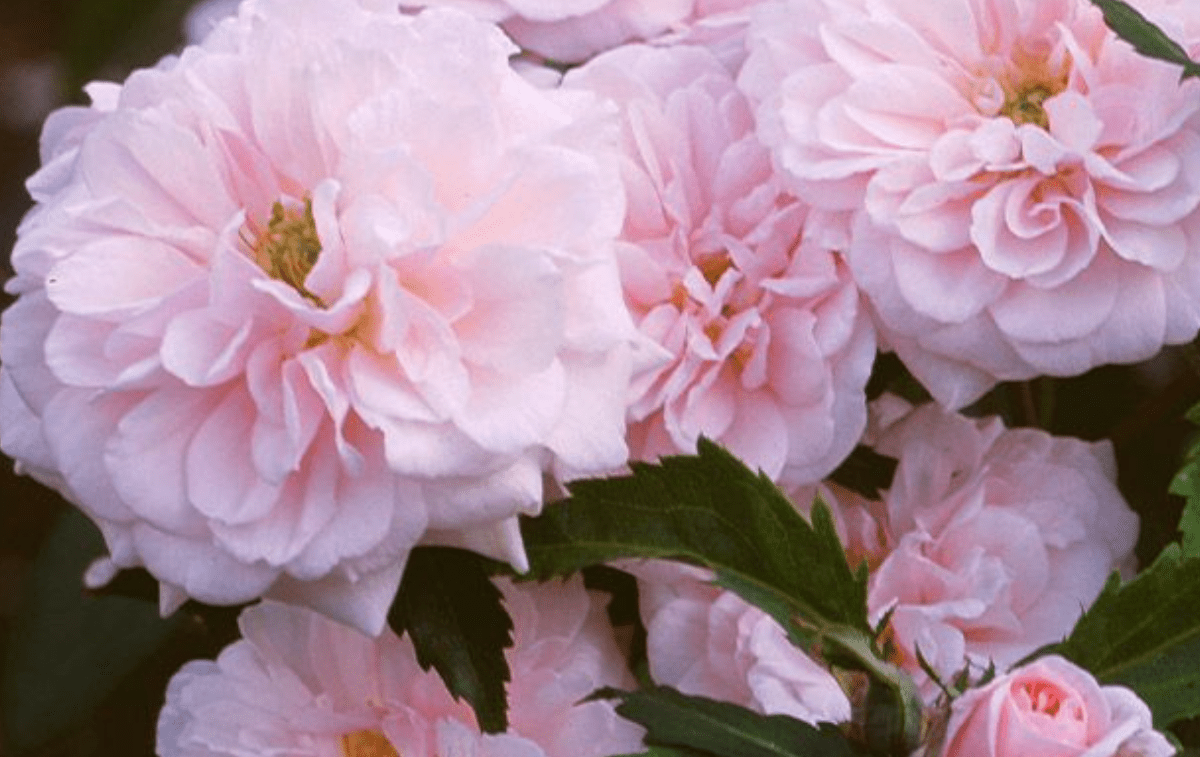
From hot pink to soft blush, there are many shades of pink in the plant world. Mixing and matching shades and tones of a single color in monochromatic gardens is common and adds dimension to a planted bed.
-
Cecile Brunner Climbing Rose, Rosa x ‘Cecile Brunner’: Gardeners who love cottage garden style know a climbing rose plays a starring role. Though the flowers of Cecile Brunner are small, they are abundant and incredibly fragrant, ideal for climbing on archways and trailing along fence lines. Hardy in zones 4 to 11, this rose needs full sun. Find Cecile Brunner and other vintage roses at Heirloom Roses.
- Pink Muhly Grass, Muhlenbergia capillaris ‘Lenca’: Growing rapidly to 3 to 4 feet tall, this cultivar of native Muhly grass looks green until it blooms with a mass of soft, pink flowers that last from early summer to fall. The blooms often get deeper pink in the fall. Plant in full sun in zones 5 to 9. Find pink muhly grass at Great Garden Plants.
- Pink Beauty Caladium, Caladium sp.: The contrasting green and pink foliage of the Pink Beauty Caladium adds visual interest to the monochromatic color scheme. A tropical plant, it grows outdoors as an annual in zones 3 to 10, but can be brought inside as a houseplant during the coldest months. Caladiums prefer the shade, and can be used to fill in pots and garden beds while perennials get established. You can find an array of pink caladiums at The Home Depot.
- Pink Peony, Peony: Peonies come in many shades of pink, from fuchsia to bubble-gum pink. Many varieties, such as Moon River, produce extra-large flowers that are also fragrant. It is a top choice for gardeners in zones 3 to 8 where peonies are perennial. They are also deer and rabbit resistant and fairly low maintenance once established. Give them full sun. Find the right shade of pink peony at Bluestone Perennials.
10. Silver
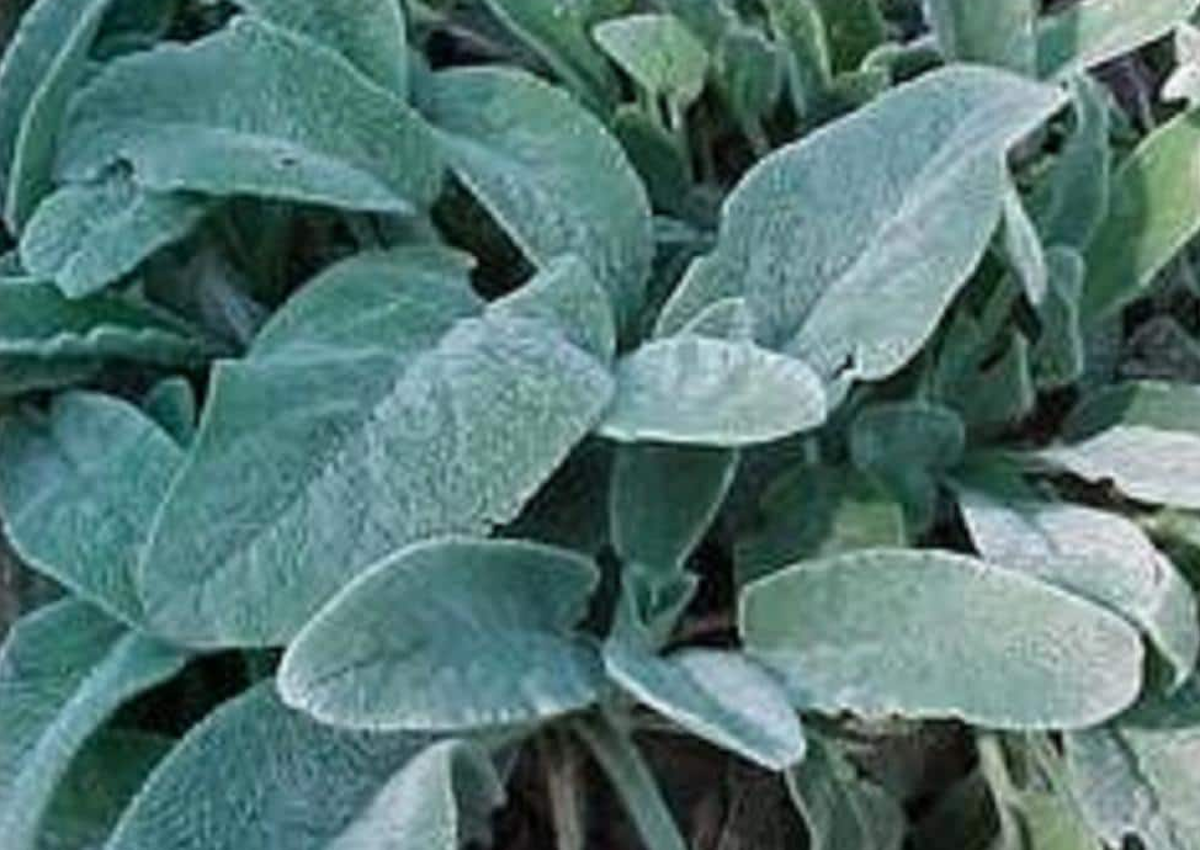
Similar to white, silver plants can be used to reflect light in a moon garden. They also can make a big statement in a garden when planted together, especially near dark purple, maroon, or black flowering plants.
- Silver Mound Wormwood, Artemisia schmidtiana ‘Silver Mound’: A perennial plant in zones 3 to 7, this artemisia stays relatively compact and has an attractive, mounding quality. The beauty is in the silver-gray foliage, which is as soft as it looks. It’s also deer and rabbit resistant. Artemisas like full sun. Find it at Great Garden Plants.
- Lamb’s Ear, Stachys byzantina: Possibly one of the softest plants in the garden, lamb’s ear gets its name from the velvety texture of its leaves. The leaves grow in a rosette pattern, and hybrids like Silver Carpet stay low to the ground and produce little to no flowers for a showy, low-maintenance ground cover. Big Ears produces large leaves. Lamb’s ears are drought tolerant and can grow in rocky soil. Plant in full sun. Stachys are perennial in zones 4 to 8. Find it at The Home Depot.
-
Spiral Aloe, Aloe polyphylla: A stunningly unique feature in a garden bed, the silvery green leaves of this aloe form a tight rosette pattern that spirals either clockwise or counterclockwise. Avid gardeners seek out one of each for their garden beds. Though it is only hardy in zones 7 to 9, spiral aloe can grow in a container and head indoors for the winter. Plant in full to partial sun. Find the seeds on Etsy.
- Silver Falls Dichondra, Dichondra argentea ‘Silver Falls’: A ground cover that also looks stunning cascading from pots or hanging baskets, dichondra grows 2 to 4 feet long but only reaches a height of 2 or 3 inches. This low-maintenance spreader with small, rounded silver leaves, needs full to partial sun. It is an annual in all zones except 9 to 11. Find the plants at The Home Depot.
